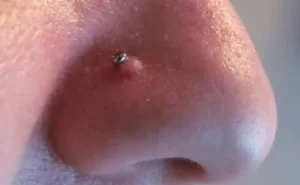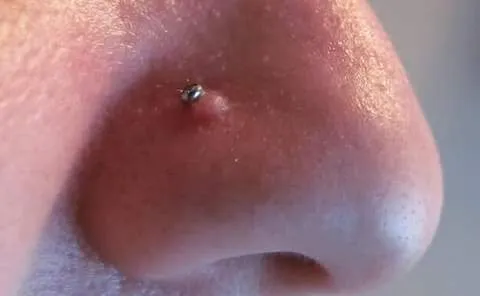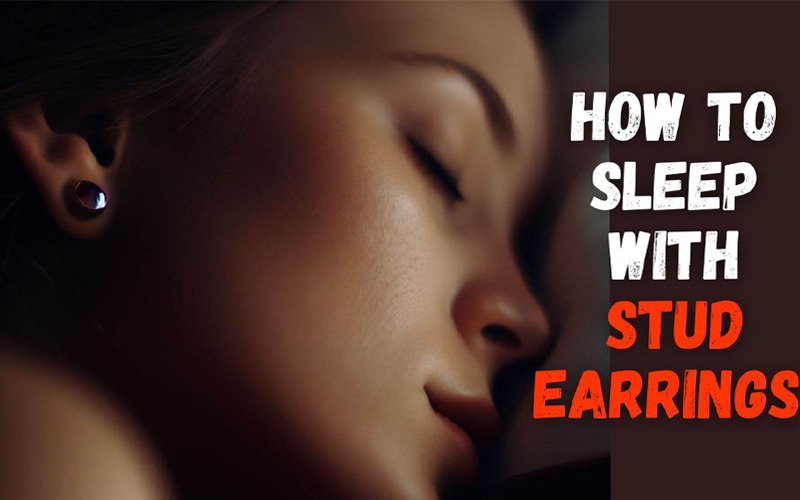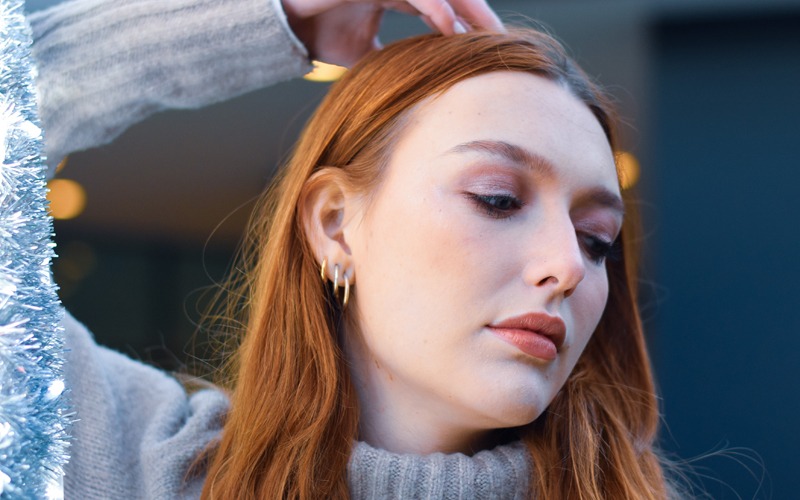Nose piercings have become increasingly popular in recent years, with people of all ages and backgrounds embracing this form of self-expression. However, as with any body modification, there are risks involved. One of the most common complications associated with nose piercings is the development of a bump or keloid around the piercing site.
Many people use the terms “nose piercing bump” and “keloid” interchangeably, but they are not the same thing. A nose piercing bump is a small, raised area of skin that can develop around the piercing site. It is usually caused by irritation or trauma to the area, and can be treated with proper care and cleaning. On the other hand, a keloid is a type of scar tissue that forms at the site of an injury or wound. It is often raised, thick, and can extend beyond the boundaries of the original injury. Keloids are more difficult to treat than nose piercing bumps and may require medical intervention.
Understanding Nose Piercings
Types of Nose Piercings
There are several types of nose piercings, including nostril, septum, and bridge piercings. Nostril piercings are the most common and are located on the side of the nose. Septum piercings are located in the center of the nose, while bridge piercings are placed on the bridge of the nose.
No matter which type of nose piercing you choose, it’s important to select a reputable piercer and ensure that the piercing is done with sterile equipment to prevent infection.
Healing Process and Timelines
The healing process for a nose piercing typically takes 6-8 weeks for a nostril piercing and 6-12 weeks for a septum piercing. During this time, it’s important to keep the piercing clean and avoid touching it with dirty hands.
It’s normal to experience some swelling and redness during the healing process, but if you notice a bump or keloid forming around the piercing, it’s important to take action.
A nose piercing bump is a small, raised area that can form around the piercing. It’s typically caused by irritation or trauma to the area and can be treated with warm compresses and saline solution.
A keloid, on the other hand, is a thick, raised scar that forms around the piercing. Keloids are more common in people with darker skin and can be difficult to treat. If you notice a keloid forming around your nose piercing, it’s important to seek medical advice from a dermatologist or other healthcare professional.
In summary, nose piercings are a popular form of body art that require proper care and attention during the healing process. By understanding the types of nose piercings and the healing process, you can ensure that your piercing stays healthy and looks great for years to come.
Identifying Nose Piercing Bumps
Nose piercing bumps are a common problem that can occur after getting a nose piercing. These bumps can be caused by a variety of factors, including infection, trauma, and allergic reactions. It’s important to identify the type of bump you have in order to determine the best course of treatment.

Causes of Bumps
There are several common causes of nose piercing bumps, including:
- Infection: If bacteria or other microorganisms enter the piercing site, it can lead to an infection. This can cause redness, swelling, and pus-filled bumps.
- Trauma: Trauma to the piercing site, such as accidentally pulling on the jewelry or sleeping on the piercing, can cause irritation and inflammation. This can lead to bumps and other symptoms.
- Allergic reactions: Some people may be allergic to the metal in their nose piercing jewelry. This can cause an allergic reaction, which can lead to bumps, redness, and other symptoms.
Symptoms of Infection
If you have a nose piercing bump that is caused by an infection, you may experience the following symptoms:
- Redness and swelling around the piercing site
- Pain or tenderness
- Pus or other discharge from the piercing site
- Fever or other signs of infection
If you suspect that you have an infection, it’s important to seek medical attention right away. Your doctor may prescribe antibiotics or other treatments to help clear up the infection.
Distinguishing Between Bumps and Keloids
When it comes to nose piercing, it is not uncommon to experience some bumps or lumps around the piercing site. However, it is important to be able to distinguish between a bump and a keloid to determine the appropriate treatment. Here are some characteristics to look for:
Characteristics of Keloids
Keloids are raised, thickened areas of skin that can be pink, red, or flesh-colored. They often have a shiny, smooth surface and can feel firm or rubbery to the touch. Keloids can be itchy, tender, or painful, and they may continue to grow over time. They can also extend beyond the boundaries of the original piercing site.
Differences in Growth Patterns
Bumps, on the other hand, are usually small and localized to the piercing site. They can be red, white, or skin-colored and may have a pimple-like appearance. Unlike keloids, bumps do not extend beyond the boundaries of the piercing site.
It is important to note that keloids are more common in individuals with darker skin tones and can be caused by trauma or injury to the skin, including piercing. Bumps, on the other hand, can be caused by a variety of factors, including infection, irritation, or an allergic reaction to the jewelry.
In summary, while bumps and keloids may look similar, they have distinct characteristics and growth patterns. If you are unsure about the nature of the bump or lump around your nose piercing, it is important to consult a healthcare professional or a piercer for proper diagnosis and treatment.
Treatment Options
Home Remedies
Home remedies can be effective in treating nose piercing bumps and keloids, especially in mild cases. Some of the popular home remedies include:
- Saltwater solution: Mix a teaspoon of salt in a cup of warm water and apply it to the affected area using a cotton ball. This solution can help reduce inflammation and prevent infection.
- Tea tree oil: Dilute tea tree oil with a carrier oil and apply it to the bump or keloid using a cotton swab. Tea tree oil has antibacterial and anti-inflammatory properties that can help reduce the size of the bump or keloid.
- Chamomile tea: Brew chamomile tea and let it cool down. Apply the tea to the affected area using a cotton ball. Chamomile has anti-inflammatory properties that can help reduce swelling and redness.
Medical Interventions
If home remedies do not work, medical interventions may be necessary. Some of the common medical treatments for nose piercing bumps and keloids include:
- Steroid injections: Steroid injections can help reduce the size of the bump or keloid by reducing inflammation. The injections are usually given every few weeks until the bump or keloid has gone down.
- Cryotherapy: Cryotherapy involves freezing the bump or keloid with liquid nitrogen. This treatment can help reduce the size of the bump or keloid by killing the cells in the affected area.
- Surgery: In severe cases, surgery may be necessary to remove the bump or keloid. However, surgery can be risky and may cause scarring.
It is important to consult a healthcare professional before trying any home remedies or medical interventions. They can help determine the best course of treatment based on the severity of the bump or keloid.
Prevention and Aftercare
Proper Piercing Care
Proper aftercare is crucial to prevent nose piercing bumps and keloids. The first step is to ensure that the piercing is done by a professional piercer using sterile equipment. After the piercing, the piercer will provide instructions on how to care for the piercing during the healing process.
It is important to keep the piercing clean and dry. Clean the piercing twice a day with saline solution or a mild soap and warm water. Avoid touching the piercing with dirty hands or clothing. Do not remove the jewelry until the piercing is fully healed unless advised by a professional.
During the healing process, avoid swimming, hot tubs, and saunas. These activities can introduce bacteria into the piercing and delay the healing process. Avoid using makeup or skincare products on or around the piercing.
When to Seek Professional Help
If a nose piercing bump or keloid develops, it is important to seek professional help. A professional piercer or dermatologist can provide advice on how to treat the bump or keloid.
Do not attempt to pop or squeeze the bump or keloid as this can cause further damage and infection. Applying tea tree oil, aspirin paste, or other home remedies is not recommended as they can cause irritation and delay the healing process.
In some cases, the bump or keloid may require medical treatment such as steroid injections or surgical removal. It is important to seek professional help to prevent further complications.
Frequently Asked Questions
How can I treat a bump on my nose piercing?
There are several ways to treat a bump on a nose piercing. One way is to clean the piercing regularly with a saline solution and avoid touching or twisting the jewelry. Applying a warm compress can also help reduce inflammation. If the bump persists, it may be necessary to consult a professional piercer or a healthcare provider for further treatment options.
What distinguishes a piercing bump from a keloid in terms of appearance?
A piercing bump is typically a small, raised bump near the piercing site that may be red, white, or flesh-colored. It may also be accompanied by tenderness, itching, or discharge. A keloid, on the other hand, is a raised scar that extends beyond the boundaries of the piercing site. It is typically firm, rubbery, and may be darker in color than the surrounding skin.
Is it possible for a nose piercing bump to disappear after removing the jewelry?
Yes, it is possible for a nose piercing bump to disappear after removing the jewelry. However, this may not always be the case, and the bump may persist even after the jewelry is removed. It is important to seek professional advice if the bump does not go away or if it becomes painful or infected.
What are the recommended treatments for keloids on piercings?
Treatment options for keloids on piercings include corticosteroid injections, cryotherapy, laser therapy, and surgical excision. It is important to consult a healthcare provider or a professional piercer for advice on the best treatment option for your specific case.
How can I differentiate between a keloid and an irritation bump on my piercing?
A keloid is a raised scar that extends beyond the boundaries of the piercing site, while an irritation bump is a small, raised bump near the piercing site that may be red, white, or flesh-colored. Keloids are typically firm and rubbery, while irritation bumps may be tender and itchy.
Are keloids associated with piercings typically soft or hard to the touch?
Keloids associated with piercings are typically hard to the touch. They may also be firm and rubbery in texture. If you suspect that you have a keloid, it is important to seek professional advice for proper diagnosis and treatment.





